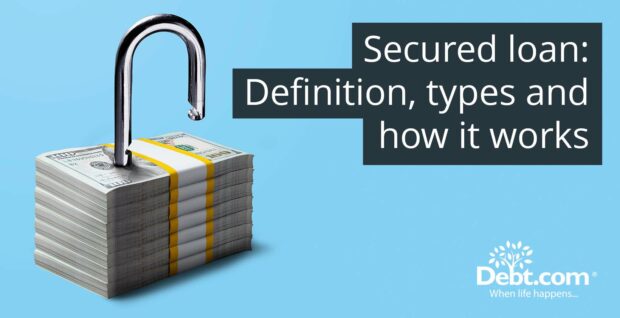
Seller financing (owner financing or purchase-money mortgage) is a real estate transaction in which the seller gives financing to the buyer, avoiding the requirement for a traditional bank mortgage. Seller financing’s key difference from typical financing techniques is that the transaction is facilitated between the buyer and seller rather than through an intermediary. The agreement’s terms are negotiated directly between the parties, giving greater flexibility in interest rates, down payments, and repayment schedules. Buyers who struggle to acquire traditional loans due to credit difficulties or other considerations benefit from seller financing. It benefits sellers by attracting more buyers, speeding up the sale process, and fetching a greater price for the property.
Seller financing functions by the seller and buyer agree on terms, including the selling price, down payment, interest rate, and repayment plan. The buyer pays installments directly to the seller over a given period with interest. The property sold is collateral for the loan, providing the seller security if the buyer fails to pay. Real estate attorneys must prepare the necessary legal paperwork explaining the parameters of the agreement to protect both parties’ interests.
A seller-financed mortgage is a real estate transaction in which the seller finances the buyer directly, avoiding the requirement for a traditional mortgage from a bank or financial institution. The buyer completes the deal by paying the seller personally. The technique enables purchasers unable to qualify for a traditional mortgage to acquire the property by negotiating terms with the seller, bypassing traditional financing channels.
Seller financing has advantages, including greater access to financing, flexibility in negotiating terms, speedier transactions, and the ability to attract more bidders. It has drawbacks, including higher interest rates, legal risks for buyers and sellers, insufficient buyer protections, seller responsibilities for property upkeep and repairs, and lower upfront returns for sellers. The guide gives a full picture of seller financing to help readers better understand it if they wonder, “What does seller financing mean?”
Table of Contents
What is seller financing?
Seller financing (owner financing or a purchase-money mortgage) is a real estate transaction in which the seller provides finance to the buyer, eliminating the requirement for a standard bank mortgage. The purchaser enters into a mortgage agreement directly with the seller, who assumes the function of the lender and oversees the financing procedure.
Seller financing differs from traditional procedures in a few areas. A seller financing transaction is a direct transaction between the buyer and seller without the involvement of a financial institution. Direct engagement provides greater flexibility in negotiating parameters, including interest rates, down payments, and repayment schedules, which are tailored to the interests of both parties. Seller financing is more affordable for purchasers with bad credit or who have trouble getting funding standards because sellers do not have as strict restrictions as banks.
What Is Seller Financing in Real Estate?
Seller financing in real estate is a transaction where the seller of a property is the lender and provides finance to the buyer instead of or in addition to a traditional mortgage. The agreement requires the buyer to pay installments directly to the seller with interest. A legal interest remains with the seller until the loan is completely repaid, even though the buyer acquires property ownership.
The buyer and seller arrange the financing terms directly, including the interest rate, payback timeline, and default implications. Seller financing benefits buyers and sellers. Buyers not eligible for a home loan due to credit difficulties or other factors still purchase a home through seller financing real estate. Offering finance to sellers increases the number of purchasers, speeds up the sale process, and obtains a higher price.
The terms of the seller-financed real estate deal must be spelled out in a legally binding contract to avoid misunderstandings or disagreements. The strategy results in successful transactions and opens up opportunities for persons interested in seller-financed homes who otherwise struggle to obtain traditional financing.
How does Seller Financing Work?
Seller financing works by agreeing between the seller and the buyer on several terms, such as the purchase price, down payment, interest rate, and repayment plan. The buyer makes installment payments directly to the seller over an interest period once these terms have been agreed upon. The property being sold is utilized as collateral for the loan, providing security to the seller if the buyer fails to make payments. Real estate lawyers are advised to draft the essential legal documents outlining the agreement’s terms to protect both parties’ interests.
What is a Seller Financed Mortgage?
A seller financed mortgage is a real estate transaction in which the seller offers financing directly to the buyer, excluding the requirement for a standard mortgage from a bank or financial institution. The buyer completes the transaction by directly paying the seller, the lender in the arrangement. The strategy allows purchasers unable to qualify for a regular mortgage to purchase the property by negotiating conditions with the seller, eliminating typical finance channels.
The mortgage process with seller financing is not the same as in standard structures. The buyer and seller work out the details of a mortgage note, such as the interest rate, repayment timeline, and other important aspects. It’s different from a typical Mortgage Financing deal because, in a seller financed mortgage, the buyer does not officially own the property until the full purchase price is paid back. Consequences for non-payment by the buyer, such as property repossession or legal action, are delineated in the mortgage note or an additional document, similar to conventional mortgages. The approach enables buyers and sellers to transact real estate without relying on traditional lending institutions.
How do you get a Seller Financing Deal?
You get a seller financing deal by following the 8 steps listed below.
- Understand seller financing involves the seller financing the transaction for the buyer rather than requiring full payment at the time of sale.
- Negotiate terms. Offer the seller the desired price while negotiating favorable terms, such as a reasonable loan rate for positive cash flow.
- Consider loan terms. Longer loan terms reduce sensitivity to the purchase price, so make sure higher-priced properties have them.
- Keep cash on hand. Aim to bring as little cash as possible to the transaction for higher-priced properties that require lesser down payments.
- Defer payments. Use rental income to cover any necessary upgrades by deferring the first few months of payments.
- Exchange down payment for repairs. Offer to exchange a portion of the down payment for repairs if the property needs to be renovated.
- Solve seller concerns. Identify sellers with unique concerns and propose creative solutions that add value to the transaction, increasing funding acceptance.
- Approach the seller. Create a clear plan and deliver the proposal to the seller, demonstrating how seller financing benefits both parties.
What is the requirements for Seller Financing?
The requirements for seller financing are listed below.
- Purchase Agreement: The purchase agreement is the document that defines the parameters of the sale, including the parties involved, the sale price, the interest rate, the down payment, and any contingencies. It is the initial contract between the buyer and seller, establishing a defined path for the transaction.
- Promissory Note: A promissory note is the loan’s financial instrument. It outlines lending terms and the penalties of default by the buyer. It formalizes the financial terms of the agreement, including repayment schedules, interest rates, and other financial commitments.
- Deed of Trust: Deed of trust is used in seller financing arrangements, involving a neutral third party holding the title until the buyer satisfies their commitments. Establishing a lien on the property protects both parties’ interests and enables a smooth transfer of ownership.
- Notary Services: Notarizing documents makes the deed of trust official, increasing their legitimacy and authenticity. It supports their legality in court and offers confidence in the event of a disagreement, even if it is not strictly necessary.
- Closing: The closing process is similar to a traditional home sale, with the promissory note and other related paperwork being executed. It symbolizes the completion of the seller financing agreement and the official transfer of ownership, usually at an attorney’s or title company’s office.
Why should you Choose Seller Financing?
You should choose seller financing for four reasons including flexible down payment, reduced fees and expenses, quicker process, and credit concerns. First, sellers are more adaptable than banks regarding down payment requirements. Seller financing is an attractive alternative for individuals unable to meet the conventional 20% down payment requirement set by lending institutions. Sellers offer a lower down payment, making the purchase easier.
Second, seller financing entails diminished fees and closing costs compared to a bank mortgage. Sellers often do not charge purchasers points, commissions, or yield spread surcharges, which lead to savings throughout the home-buying process.
Third, seller financing is often much faster than traditional lending. Transactions are completed within a week, making moving into the new home much easier. Lastly, consider seller financing if there is a history of late payments that have damaged the credit. Avoiding banks and credit unions and their strict approval requirements makes obtaining funding easier for individuals with poor credit.
What are the Advantages of Seller Financing?
The advantages of seller financing are listed below.
- Easier Access to Financing: Seller financing is more accessible to buyers with difficulty obtaining traditional mortgages.
- Flexibility: Many terms are negotiated, including down payment, interest rates, and repayment schedules.
- Faster Transactions: Transactions close more quickly as they do not involve lengthy bank processes and approvals.
- Attracting Buyers/Selling Faster: Offering seller financing attracts more buyers and expedites the sale, especially in slower real estate markets.
What are the Disadvantages of Seller Financing?
The disadvantages of seller financing are listed below.
- Higher Interest Rates: Buying without closing costs entails a higher interest rate than market-rate mortgages from banks, negating savings.
- Legal Risks: Buyers and sellers face legal risks if the buyer defaults, which leads to disputes and the need for foreclosure proceedings.
- Incomplete Buyer Protections: Seller financing deals lack protections such as home inspections, mortgage insurance, or appraisals part of traditional mortgages.
- Responsibilities on Seller: Sellers must manage responsibilities such as property upkeep, repairs, and loan management, tasks handled by financial institutions in traditional mortgages.
- Reduced Return Upfront: Sellers receive less immediate cash as they finance a significant portion of the sale, impacting their initial financial returns.
How Long is the Term for Seller Financing?
The term for seller financing ranges from a few years, about five years, to far longer periods. The specific term for seller financing varies depending on the arrangement between the buyer and seller. Seller financing is five years. The buyer must make periodic payments to the vendor using the predetermined Terms of Repayment.
A large balloon payment is due at the end of the term. The balloon payment is a huge one-time payment that pays out the loan’s remaining balance. Buyers must plan for the lump sum payment as part of their financial plan.
Seller-financed deals sometimes expect the original purchase to help the buyer improve their creditworthiness and build equity in the property. It prepares them to refinance the remaining balance with a typical lender once the seller financing period expires.
The maximum time for seller financing differs depending on the terms of the buyer-seller agreement, although the usual term is roughly five years. Some seller-financed transactions are shorter, while others last more than five years, depending on mutual consent and special conditions. The duration of the seller financing term is a significant negotiating point between the parties, determining the entire structure and feasibility of the deal.
How Much is the Interest Rate for Seller Financing?
The interest rate for seller financing ranges between 6% and 10%. These rates apply to seller notes with maturities ranging from three to seven years. Seller notes are interest-bearing instruments, with the interest rate reflecting the loan’s length and accompanying risk.
Seller notes are considered unsecured debt products, so interest rates are slightly higher than regular loans given by banking institutions. The increase compensates for the higher risk inherent in seller financing arrangements. Interest rates ranging from 6 to 10 percent are frequently associated with seller financing.
Buyers and sellers involved in seller financing deals must carefully analyze the interest rate, directly impacting the acquisition’s overall cost. Understanding the terms and conditions associated with the loan rate is critical to ensuring that all parties are in agreement and completely aware of their financial commitments throughout the financing arrangement.
Is Seller Financing applicable for Personal Loan?
No, seller financing is not applicable for personal loans. Seller financing is used in real estate or commercial transactions where the seller offers funding directly to the buyer. The buyer obtains credit directly from the seller to enable the purchase instead of applying through a traditional bank or financial institution for a loan. Seller financing is rarely used for personal loans, such as unsecured or consumer loans.
Personal loans are originated by banks, credit unions, or online lenders, and involve a direct lending connection between the borrower and the financial institution. Personal goods sellers do not typically finance buyers directly, unlike real estate vendors who consent to finance a portion or the entire purchase price. Examples of such products include electronics, automobiles, and furniture. Buyers seek personal loans from reputable lenders to finance such purchases.
Factors including risk, regulations, interest rates, and preference for cash contribute to the scarcity of seller financing for personal loans. Personal loans are unsecured in the first place, which means sellers are exposed to greater risk since no collateral is required. Personal lending is subject to various restrictions and consumer protection legislation, making it difficult for sellers to offer loans compliantly. Sellers lack the competence to set acceptable interest rates or successfully manage repayment conditions. Most sellers prefer instant cash payments over installment payments over time, which reduces the appeal of seller financing for personal loans.
Individuals seeking personal loans look into traditional lenders such as banks and internet lenders, peer-to-peer lending platforms, credit cards for smaller sums, or borrowing from trusted family members or friends with explicit terms. These alternatives provide more established avenues for getting personal financing than seller financing.
Is Seller Financing Safe?
Yes, seller financing is safe when properly structured. Seller financing arrangements are good alternatives for buyers and sellers, even if the seller bears more risk. Seller financing offers many advantages over traditional mortgages, such as flexibility and faster closing timeframes. Seller financing carries inherent risks for both parties involved. Buyers must be aware of potential negatives such as increased interest rates, the necessity for seller approval, due-on-sale restrictions, and balloon payments, which pose financial concerns. Sellers incur similar risks, such as buyer default, repair costs if the property is returned, and compliance with rules such as the Dodd-Frank Act. The Dodd-Frank Act is a comprehensive piece of financial reform legislation enacted in 2010 to reduce risks in the United States’ financial system by boosting regulatory monitoring and safeguarding consumers. Seller financing has benefits in some cases, but caution and due diligence are necessary to reduce risks and guarantee both parties a successful and safe transaction.
How Can Seller Financing and Debt Consolidation Loans Work Together?
Seller financing and debt consolidation loans work together by offering creative financing options to buyers in real estate transactions. Seller financing involves the seller as the lender, delivering funding directly to the buyer rather than the buyer obtaining a standard mortgage. The arrangement allows the buyer to pay the seller directly on agreed terms. Debt consolidation loans include receiving a new loan to pay off existing debts and combining several obligations into a single loan with a single monthly payment, simplifying debt repayment and lowering interest rates.
Buyers acquire a property using seller financing and credit consolidation financing, wherein a portion of the loan amount is utilized to consolidate existing obligations. The method enables buyers to combine their loans into the new loan offered by the seller, simplifying financial management and lowering interest rates. Buyers who combine seller financing with debt consolidation handle current debts, simplify payments, and benefit from lower interest rates.











